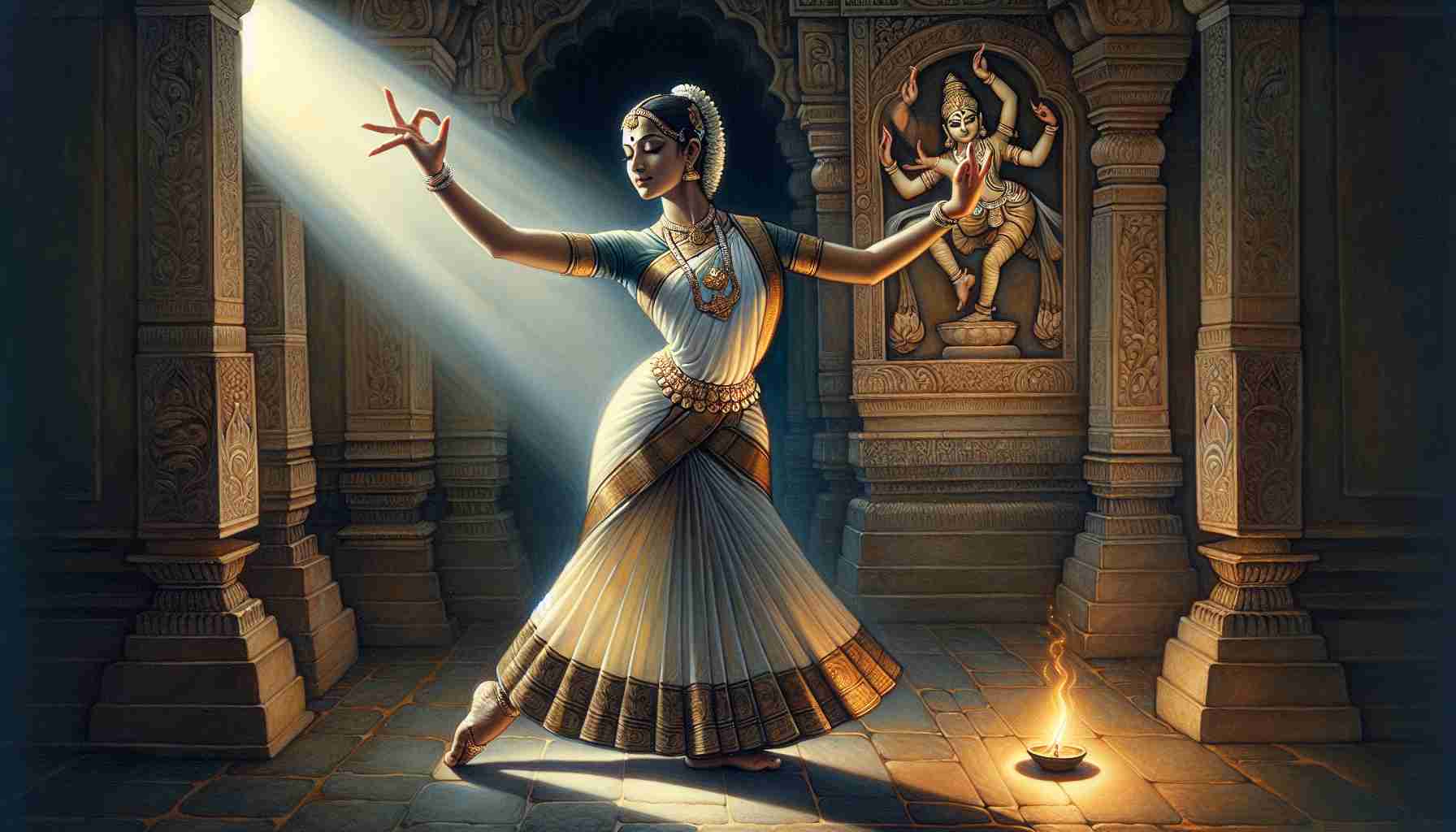

I am Meena — the temple dancer from Thanjavur. My mother danced before me, and her mother before her. Each of us tied the bells to our ankles with care and reverence, knowing that every step we took was a step toward the gods.
But years had passed since I last performed in the sanctum of the old temple. After Appa died, and Ma fell ill so soon after, something inside me fell silent. I left our ancestral home, the temple hall, and the sacred rhythms behind. I told myself the world had changed — there was no more place for the devadasi path, no more place for sacredness in movement.
I moved to Chennai, took a job at a modest accounting firm, and wore my salwar with stiff dignity instead of silk skirts that once swept the mandapam floor. Each day passed in stillness of the wrong sort — not the divine stillness of meditation, but the numbness of forgetting.
One evening, alone in my flat, I sat on the cold tiles with the fan spinning above like a slow drumbeat. My eyes wandered to the brass statue of Nataraja — Shiva as the cosmic dancer — tucked away in a corner out of nostalgia. The flickering light from a small diya cast shadows that made Him dance.
Suddenly, I remembered a verse I hadn’t thought of in years:
"Wherever there is movement, there is the presence of the Lord." (Rig Veda 1.164.31)
I closed my eyes, and my toes moved. Just a little. The old rhythm stirred in my blood. The aramandi — that deep, grounding posture — came to me out of nowhere. My breath deepened. My hands moved in mudra: Alapadma for the lotus blooming. Tripataka for the flame.
Tears came, sliding down my cheeks without shame. With each motion, pieces of me awakened — not for the audience, not for tradition. Just for the Divine. Just for myself.
I danced for no one’s eyes that night — only for the One who watches from within. The Bhagavad Gita says, “He who sees inaction in action and action in inaction is wise...” (Gita 4.18). That night, I understood it. My stillness had been a kind of restless inaction. But now, in movement, I had found peace.
In the months since, I’ve started rising early again. I dance in my small room, barefoot, with my prayer shawl as my only adornment. Every breath, every gesture, feels like a mantra made flesh.
The Taittiriya Upanishad tells us, “Ananda — bliss — is the very nature of the Self.” (2.7.1)
I had let myself go numb, believing meaning was a thing of the past. But that was never true. The sacred was always in each breath, waiting to be danced again.
Let me tell you — even when life feels meaningless...
The dance still waits.
I am Meena — the temple dancer from Thanjavur. My mother danced before me, and her mother before her. Each of us tied the bells to our ankles with care and reverence, knowing that every step we took was a step toward the gods.
But years had passed since I last performed in the sanctum of the old temple. After Appa died, and Ma fell ill so soon after, something inside me fell silent. I left our ancestral home, the temple hall, and the sacred rhythms behind. I told myself the world had changed — there was no more place for the devadasi path, no more place for sacredness in movement.
I moved to Chennai, took a job at a modest accounting firm, and wore my salwar with stiff dignity instead of silk skirts that once swept the mandapam floor. Each day passed in stillness of the wrong sort — not the divine stillness of meditation, but the numbness of forgetting.
One evening, alone in my flat, I sat on the cold tiles with the fan spinning above like a slow drumbeat. My eyes wandered to the brass statue of Nataraja — Shiva as the cosmic dancer — tucked away in a corner out of nostalgia. The flickering light from a small diya cast shadows that made Him dance.
Suddenly, I remembered a verse I hadn’t thought of in years:
"Wherever there is movement, there is the presence of the Lord." (Rig Veda 1.164.31)
I closed my eyes, and my toes moved. Just a little. The old rhythm stirred in my blood. The aramandi — that deep, grounding posture — came to me out of nowhere. My breath deepened. My hands moved in mudra: Alapadma for the lotus blooming. Tripataka for the flame.
Tears came, sliding down my cheeks without shame. With each motion, pieces of me awakened — not for the audience, not for tradition. Just for the Divine. Just for myself.
I danced for no one’s eyes that night — only for the One who watches from within. The Bhagavad Gita says, “He who sees inaction in action and action in inaction is wise...” (Gita 4.18). That night, I understood it. My stillness had been a kind of restless inaction. But now, in movement, I had found peace.
In the months since, I’ve started rising early again. I dance in my small room, barefoot, with my prayer shawl as my only adornment. Every breath, every gesture, feels like a mantra made flesh.
The Taittiriya Upanishad tells us, “Ananda — bliss — is the very nature of the Self.” (2.7.1)
I had let myself go numb, believing meaning was a thing of the past. But that was never true. The sacred was always in each breath, waiting to be danced again.
Let me tell you — even when life feels meaningless...
The dance still waits.